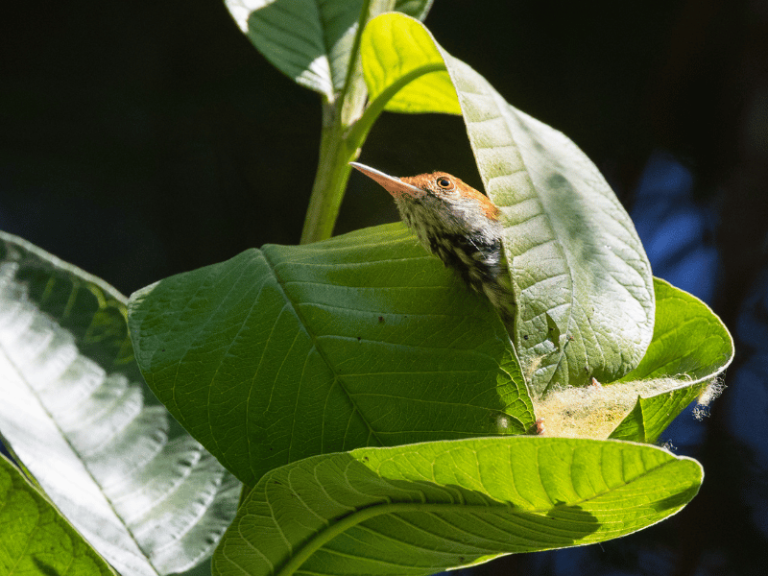The tropical bird, the tailorbird, is famous for its clever nest-building skills. Their bodies and feathers resemble those of warblers. They have a petite figure, with the tail feathers occupying more than half of their entire body. From their ability to sew nests on leaves, we can infer that their slightly flattened and slender bills are more elongated and slightly curved compared to other birds. Their tarsal bones are also slender but robust, enabling them to hop swiftly.
From the nesting habits and skills of typical birds, we can deduce their evolutionary position, which is related to the development of advanced neural activities in birds. For instance, primitive waterfowl, cranes, ducks, and doves build very rudimentary nests using twigs, reeds, and grass. In contrast, passerine birds generally construct more sophisticated nests with intricate craftsmanship, representing a more advanced stage of avian evolution. The nest-making skill of the tailorbird is a prominent example of this. They live in tropical forests, where they select large or several drooping leaves from mango and guava trees. They sew these leaves together using plant fibers, spider silk, and wild silk. Their slender, slightly curved bills act like natural needles. They fold, pierce, and sew the leaves into a pocket-shaped nest using interesting coordinated movements of their beaks and feet. To prevent the stitching from loosening, they tie knots at critical points. Once the pocket is formed, they begin to fill it with tender twigs and then cushion it with soft plant fibers, cotton, animal hair, etc., creating a comfortable and warm nest. Additionally, their nests are tilted to some extent to prevent rainwater from entering. These meticulous designs suggest that the tailorbird’s advanced neural activities are well developed; otherwise, they would not utilize tropical forest leaves to create such interesting nests.

